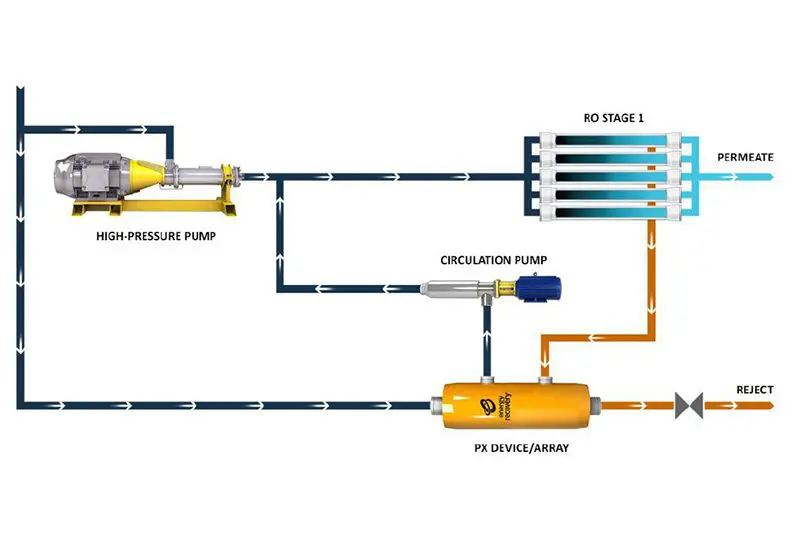Energy Recovery is the market leader for energy-saving technology in the seawater reverse osmosis (SWRO) desalination industry. The company’s flagship technology is the PX® Pressure Exchanger®, an isobaric energy recovery device (ERD) that reduces energy consumption by up to 60% in desalination applications. Energy Recovery’s products and services are accepted by the industry as trusted, reliable, high-performing, energy-saving solutions, as evidenced by the following:
- Over 35,000 PX ERDs have been installed in SWRO desalination facilities worldwide, producing an estimated total of 36 million cubic meters of freshwater per day,
- Over $6 billion in energy cost is saved by plant owners annually, and
- Total CO2 emissions from desalination plants are reduced by over 19 million tons every year.
In the last decade, the PX Q300 served as the gold standard of ERDs in SWRO desalination plants, demonstrating consistent performance, making it extremely reliable and durable, requiring low maintenance and providing maximum uptime. Building on its success, Energy Recovery launched the flagship PX Q400. The PX Q400 offers 33% higher unit capacity and improved performance over the PX Q300, providing even more savings to Energy Recovery’s customers.
Results
This paper explains and quantifies how the PX Q400 saves energy and operating costs in a typical desalination system compared to the high-performing industry-standard PX Q300. With improved efficiency and mixing, the PX Q400 lowers the SEC of a typical SWRO system by over 0.05 kWh/m3 or 2% compared to the same system equipped with PX Q300s. In addition, the PX Q400 has a higher unit capacity, so fewer PX devices are required for a given SWRO train capacity. This not only reduces capital cost but also decreases plant footprint.
Read the full whitepaper at the link below.
